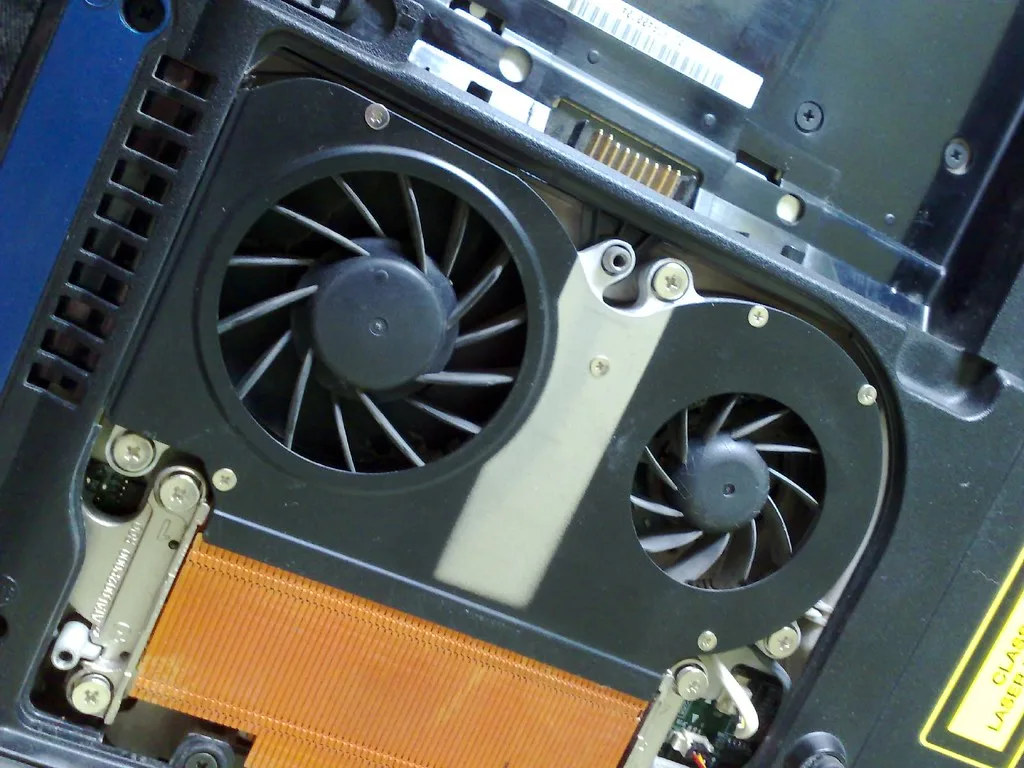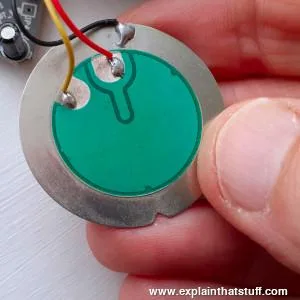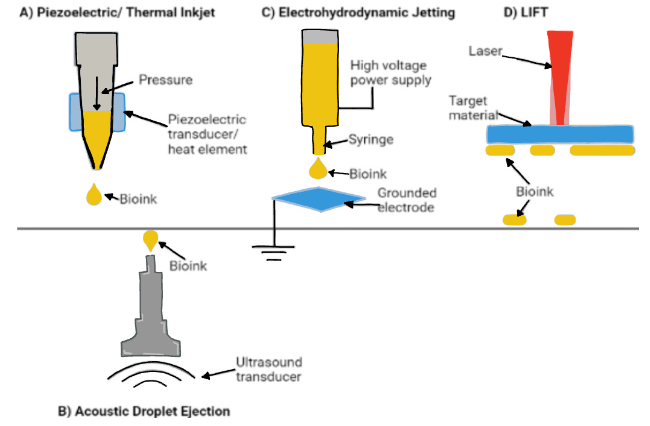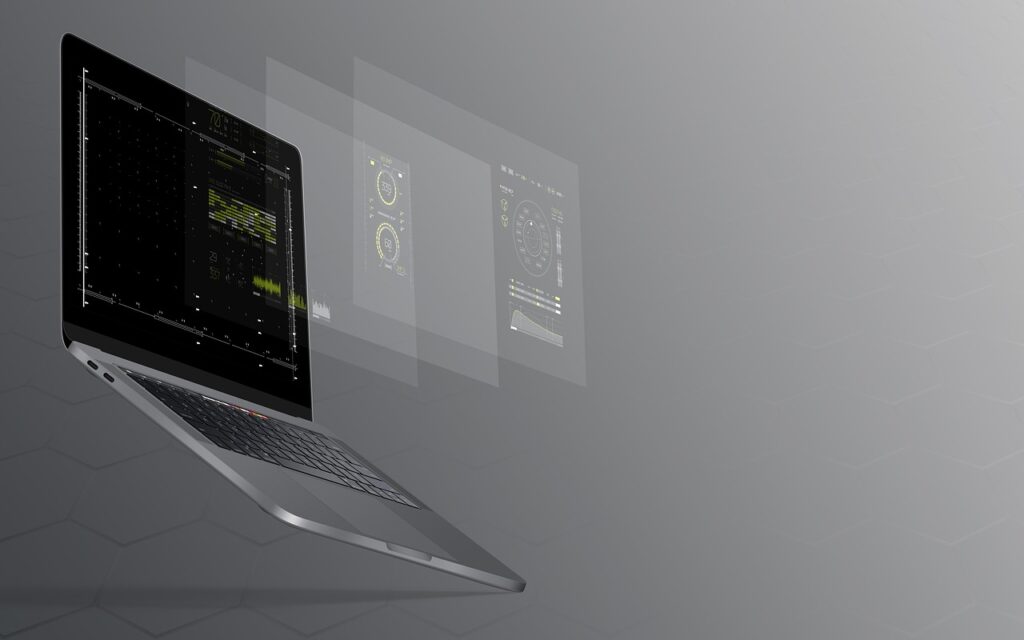This website may contain affiliate links, which means I may receive a commission if you click on a link and make a purchase. While clicking on these links won't cost you any extra money, they will help me keep this site up and running. Your support is appreciated!

Feeling that heat on your lap from your laptop? We’ve all been there. It’s no secret that laptops can get toasty, but fear not – the future of laptop cooling technology is here to save the day. From sleek and efficient designs to cutting-edge cooling systems, the future of keeping your laptop cool is looking better than ever. Say goodbye to sweaty palms and hello to a cooler, more comfortable computing experience. Take a peek into the future of laptop cooling technology with us, and discover the innovative solutions that are changing the game.
Table of Contents
- Exploring the Potential of Graphene Cooling Solutions
- Revolutionizing Heat Dissipation with Phase Change Materials
- Harnessing the Power of Liquid Metal for Superior Laptop Cooling
- The Rise of Piezoelectric Fans in Slimmer, More Efficient Designs
- Improving Airflow with Magnetocaloric Effect Innovations
- Maximizing Efficiency with Vapor Chamber Technology Integration
- Embracing Nanowire Coolers for a Quantum Leap in Thermal Management
- The Advent of Ionic Wind Cooling: Silent Yet Powerful
- Integrating AI for Smart, Adaptive Cooling Systems
- Electrohydrodynamic Cooling: The Next Frontier in Laptop Thermal Management
- Questions & Answers About The Future of Laptop Cooling Technology
- Insights and Conclusions
Exploring the Potential of Graphene Cooling Solutions
Graphene, the wonder material of the future, has shown incredible potential in revolutionizing the way we cool electronic devices. With its superior thermal conductivity, flexibility, and strength, graphene cooling solutions are poised to transform the future of laptop cooling technology.
Unlike traditional cooling methods, graphene offers numerous advantages that make it an ideal solution for keeping laptops cool:
- Efficiency: Graphene’s high thermal conductivity allows for efficient heat dissipation, keeping laptops running at optimal temperatures.
- Flexibility: Graphene’s flexibility allows for seamless integration into the slim and sleek designs of modern laptops without adding bulk or weight.
- Strength: Graphene’s exceptional strength ensures durability and longevity of cooling solutions, providing a reliable option for laptop cooling.
When it comes to the future of laptop cooling technology, graphene is undoubtedly at the forefront. Companies like Samsung and IBM are already investing in research and development to harness the full potential of graphene for cooling solutions. With its myriad benefits and unparalleled performance, graphene cooling solutions are set to redefine the way we keep our laptops cool.
Revolutionizing Heat Dissipation with Phase Change Materials

When it comes to laptop cooling, traditional methods just don’t cut it anymore. As technology advances, so does the need for more efficient and effective ways to dissipate heat. This is where phase change materials (PCMs) come into play, revolutionizing the way laptops stay cool. Imagine a world where your laptop stays at the perfect temperature no matter how intense your work or gaming session gets – that’s the future with PCM technology.
So, how exactly do PCMs work? These materials are designed to absorb and release heat as they change from solid to liquid and back again. This means that as your laptop heats up, the PCM absorbs the excess heat, keeping your device at an optimal temperature. When the laptop cools down, the PCM releases the stored heat, ensuring a consistently cool environment.
One of the key advantages of PCM technology is its ability to provide passive cooling, meaning no fans or other moving parts are necessary. This not only reduces noise and energy consumption but also increases the lifespan of your laptop. With PCMs, you can say goodbye to overheating and hello to a more reliable and durable laptop experience.
Harnessing the Power of Liquid Metal for Superior Laptop Cooling

Laptops have become an indispensable part of our lives, whether you are a student, professional, or simply someone who enjoys browsing the internet. With the increasing demand for more powerful and compact laptops, the need for effective cooling systems has become more crucial than ever. Traditional cooling methods, such as fans and heat sinks, have their limitations, which is why there has been a growing interest in harnessing the power of liquid metal for laptop cooling.
Liquid metal cooling technology has the potential to revolutionize the way laptops dissipate heat, offering superior performance and efficiency compared to traditional methods. By utilizing the unique properties of liquid metal, such as its high thermal conductivity and low viscosity, manufacturers can ensure that the laptop remains at an optimal temperature even under heavy workloads. This results in enhanced performance and longevity of the laptop components, ultimately providing a better user experience.
One of the key advantages of liquid metal cooling is its ability to conform to the uneven surfaces of laptop components, ensuring efficient heat transfer. Additionally, liquid metal is highly durable and resistant to corrosion, making it a reliable and long-lasting cooling solution for laptops.
However, it is important to note that the application process for liquid metal cooling requires precision and expertise, and improper application can lead to damaging the laptop components. Therefore, it is crucial to rely on professional services or trusted manufacturers for the application of liquid metal cooling solutions.
For those looking to explore this exciting new technology, companies such as Thermal Grizzly and Corsair offer expertly crafted liquid metal cooling solutions for laptops, ensuring optimal performance and durability.
The Rise of Piezoelectric Fans in Slimmer, More Efficient Designs

The rise of piezoelectric fans in laptop cooling technology is revolutionizing the way we think about efficient and slim designs. These fans are creating a new standard for laptop cooling, providing a quieter and more energy-efficient option for users. With their small size and lightweight properties, piezoelectric fans are an ideal choice for slim laptops without compromising on cooling power.
One of the major advantages of piezoelectric fans is their ability to operate silently, which is a game-changer for those who rely on their laptops in quiet environments such as libraries or offices. Additionally, these fans consume less power than traditional cooling systems, adding to their appeal for eco-conscious consumers. The integration of piezoelectric fans in laptops is a clear step towards a more sustainable and efficient future.
Furthermore, the slim design of piezoelectric fans allows for better airflow and more effective cooling, resulting in improved performance and longevity for laptops. These fans are also less prone to dust buildup, reducing the need for frequent cleaning and maintenance. As a result, laptops equipped with piezoelectric fans can operate at optimal temperatures with minimal effort, offering a seamless and hassle-free user experience.
Improving Airflow with Magnetocaloric Effect Innovations
Improving airflow with magnetocaloric effect innovations is revolutionizing the way we think about laptop cooling technology. This cutting-edge approach utilizes the magnetocaloric effect, which is the ability of a material to heat up and cool down in response to changes in a magnetic field. By harnessing this phenomenon, engineers are developing new cooling systems that promise to be more efficient, quieter, and more environmentally friendly than traditional fans and heat sinks.
One of the most exciting developments in magnetocaloric cooling is the use of magnetic refrigerants, such as gadolinium or lanthanum manganite. These materials can be manipulated to produce cooling effects when exposed to a magnetic field, making them ideal for compact and portable devices like laptops. By incorporating these refrigerants into the design of laptop cooling systems, engineers are able to achieve greater cooling power with smaller, lighter components, resulting in sleek, high-performance devices that don’t sacrifice on thermal management.
In addition to being more compact and efficient, magnetocaloric cooling systems also offer the potential for quieter operation. Unlike traditional fans, which can produce distracting whirring and buzzing noises, magnetocaloric systems generate minimal sound, creating a more peaceful and enjoyable user experience. With these innovations, the future of laptop cooling technology is looking brighter than ever before, promising improved performance, reduced energy consumption, and an all-around more enjoyable computing experience.
Maximizing Efficiency with Vapor Chamber Technology Integration
The integration of vapor chamber technology into laptop cooling systems marks a significant leap forward in computing efficiency. With its ability to dissipate heat rapidly and evenly, vapor chamber technology offers a more effective cooling solution compared to traditional heat pipe systems. By maximizing heat transfer and minimizing hot spots, this innovative approach ensures that laptops can operate at optimal performance levels without the risk of overheating.
One of the key advantages of vapor chamber technology is its versatility in design and application. Whether it’s a gaming laptop with high processing power or a sleek ultrabook for business professionals, vapor chamber cooling can be tailored to fit a wide range of form factors and thermal requirements. This flexibility allows for more compact and lightweight laptops without sacrificing cooling capabilities, resulting in a better user experience.
Furthermore, the seamless integration of vapor chamber technology into laptop cooling systems also contributes to energy efficiency. By maintaining lower operating temperatures, laptops equipped with vapor chamber cooling consume less power, leading to extended battery life and reduced environmental impact. As the demand for sustainable and eco-friendly technology continues to grow, the adoption of vapor chamber cooling represents a step towards a greener future in computing.
Embracing Nanowire Coolers for a Quantum Leap in Thermal Management
When it comes to the future of laptop cooling technology, embracing nanowire coolers could lead to a quantum leap in thermal management. These innovative coolers are designed to address the growing demand for more efficient and effective cooling solutions for electronic devices, especially laptops. By harnessing the power of nanowires, these coolers offer a promising solution to the challenges of heat dissipation in laptops.
One of the key benefits of nanowire coolers is their ability to significantly improve thermal conductivity. The nanoscale structure of these coolers allows for better heat transfer, resulting in improved cooling performance. This means that laptops equipped with nanowire coolers can operate at lower temperatures, reducing the risk of overheating and potential damage to internal components.
Additionally, nanowire coolers are also incredibly compact and lightweight, making them ideal for use in laptops. Their small size and low weight make them easy to integrate into the design of modern laptops without adding bulk or sacrificing portability. With the growing trend towards thinner and lighter laptops, nanowire coolers offer a practical and efficient solution for managing heat in these devices.
The Advent of Ionic Wind Cooling: Silent Yet Powerful
The future of laptop cooling technology is here, and it’s shaping up to be quiet yet incredibly powerful. The advent of Ionic Wind Cooling is revolutionizing the way laptops are cooled, offering a host of benefits that traditional cooling methods simply can’t match.
One of the key advantages of Ionic Wind Cooling is its silent operation. Unlike traditional fans, which can be noisy and disruptive, Ionic Wind Cooling utilizes electrically charged particles to create airflow, eliminating the need for moving parts. This means that you can enjoy a quieter, more peaceful computing experience without the distracting hum of cooling fans.
But don’t let its silent nature fool you – Ionic Wind Cooling is also incredibly powerful. By using electrically charged ions to create airflow, this innovative technology is able to effectively dissipate heat from your laptop, keeping your device running at optimal temperatures even during heavy use. This not only helps to prolong the lifespan of your laptop, but also ensures that you can work or play without worrying about overheating.
Integrating AI for Smart, Adaptive Cooling Systems

The integration of AI in laptop cooling systems represents a major leap forward in the world of technology. Through the use of advanced machine learning algorithms, these smart, adaptive cooling systems are able to analyze and respond to the thermal needs of a laptop in real-time. This means that the cooling system can adjust its performance based on the specific usage and heat output of the laptop, providing optimal cooling efficiency at all times.
The future of laptop cooling technology is incredibly exciting, with AI playing a central role in the development of intelligent cooling solutions. By harnessing the power of AI, laptop manufacturers are able to create cooling systems that are not only highly efficient, but also incredibly responsive and adaptable. This means that users can enjoy a more reliable and consistent cooling performance, regardless of the demands placed on their laptop.
Furthermore, the integration of AI in laptop cooling systems has the potential to significantly extend the lifespan of devices. By ensuring that laptops are always operating within safe temperature ranges, these smart cooling systems can help to reduce the risk of overheating and hardware damage. This not only saves users the hassle and expense of having to replace or repair their laptops, but also contributes to a more sustainable and environmentally-friendly approach to technology.
Electrohydrodynamic Cooling: The Next Frontier in Laptop Thermal Management

When it comes to laptop thermal management, the future is looking bright with the emergence of electrohydrodynamic cooling. This innovative technology promises to revolutionize the way laptops dissipate heat, offering improved performance and efficiency. With the potential to transform the user experience, electrohydrodynamic cooling is set to be the next frontier in laptop thermal management.
So, what exactly is electrohydrodynamic cooling, and how does it work? Essentially, this cutting-edge technology utilizes the principles of electrohydrodynamics to enhance the heat dissipation process in laptops. By leveraging the movement of ions in the air, electrohydrodynamic cooling can effectively remove heat from the laptop’s internal components, keeping it running at optimal temperatures.
One of the key advantages of electrohydrodynamic cooling is its ability to provide more precise and targeted thermal management. Traditional cooling methods often result in uneven heat distribution, leading to hotspots and decreased performance. With electrohydrodynamic cooling, laptops can maintain a consistent temperature across all components, ensuring smoother operation and improved longevity. Plus, this innovative approach to thermal management is also more energy-efficient, reducing power consumption and extending battery life.
Questions & Answers About The Future of Laptop Cooling Technology
What is laptop cooling technology?
Laptop cooling technology refers to the methods and systems used to prevent laptops from overheating during use. This is crucial for ensuring consistent performance and preventing damage to the device.
Why is laptop cooling important for the future?
As laptops become more powerful and compact, the risk of overheating increases. Proper cooling technology is essential to maintain performance and extend the lifespan of these devices.
How does laptop cooling technology work?
Laptop cooling technology can include a variety of methods such as fans, heat sinks, thermal paste, and even liquid cooling systems. These are designed to dissipate heat generated by the laptop’s components.
What are the current challenges in laptop cooling technology?
One of the main challenges is developing efficient cooling solutions that are also compact and energy-efficient. This becomes even more difficult as laptops continue to become smaller and more powerful.
What advancements can we expect to see in laptop cooling technology in the future?
We can expect to see advancements in materials used for heat dissipation, more efficient fans, and possibly even new cooling technologies such as vapor chambers or advanced phase change materials.
Will laptop cooling technology continue to improve?
Yes, as long as the demand for more powerful and compact laptops continues, there will be a need for ongoing improvements in cooling technology to keep up with the increasing heat generation.
How can I improve the cooling of my current laptop?
You can improve cooling by keeping air vents unobstructed, using a laptop cooling pad, or even applying new thermal paste to the CPU and GPU to ensure better heat transfer.
Are there any potential risks associated with laptop cooling technology?
One potential risk is reduced reliability if the cooling system is not properly maintained or if the laptop is subjected to extreme conditions. However, advancements in technology aim to reduce these risks.
Can laptop cooling technology impact overall laptop performance?
Yes, a well-designed cooling system can help maintain consistent performance by preventing thermal throttling, which occurs when the device overheats and reduces its own performance to cool down.
Is laptop cooling technology only for high-performance laptops?
While high-performance laptops generate more heat, all laptops can benefit from effective cooling technology to ensure reliable performance and longevity.
Insights and Conclusions
As we look to the future of laptop cooling technology, it’s clear that innovation and creativity will continue to drive advancements in this field. From advanced materials to new cooling mechanisms, the possibilities are endless. So, whether you’re a casual user or a hardcore gamer, the future is looking cool for your laptop. Stay tuned for more exciting developments on the horizon. And remember, the next time your laptop heats up, the future of cooling technology will have your back.






